The Great Depression & WW II
A New Deal
In 1932 Franklin Roosevelt was nominated by the Democratic Party as their candidate for president. In his speech to the convention, he said “I pledge you, I pledge myself, to a New Deal for the American people.”
The New Deal became the name by which the re-cover-y programs proposed by the new president and passed by Congress were known.
Roosevelt believed that using the power of the federal government was the only way to save the people and the country from the economic woes of the Great Depression .
Roosevelt believed that using the power of the federal government was the only way to save the people and the country from the economic woes of the Great Depression .
Roosevelt had earlier said that the country needed “persistent experimentation…if it fails, admit it frankly and try another.”
In the first days of his administration, Congress passed Roosevelt’s proposed programs on banking reform, emergency relief programs, work relief and agriculture.
Later acts, also known as part of the New Deal legislation, included union protection laws, the Social Security Act, and programs to help -tenant farmer-s and migrant workers.
Later acts, also known as part of the New Deal legislation, included union protection laws, the Social Security Act, and programs to help -tenant farmer-s and migrant workers.
The New Deal acts were set up to offer direct relief, economic re-cover-y and financial reform. Relief programs were set up to help people most affected by the Depression. This included programs that gave people work and pay like the Civilian Conservation Corps and the Works Progress Administration.
These programs became known by their acronyms or initials. Works Progress Administration was WPA, Civilian Conservation Corps was called the CCC, and the Tennessee Valley Authority was known as TVA. People said the New Programs were like alphabet soup.
These programs became known by their acronyms or initials. Works Progress Administration was WPA, Civilian Conservation Corps was called the CCC, and the Tennessee Valley Authority was known as TVA. People said the New Programs were like alphabet soup.
Reform acts were aimed at long-term measures to avoid another depression. It included the National Re-cover-y Administration, which was later declared by the Supreme Court to be unconstitutional, the Federal Deposit Insurance Corporation, the Securities Act, and the Fair Labor Standards Act.
Roosevelt and his wife, Eleanor, also tried to lessen people’s worries about the economy. They made public appearances and encouraged citizens through speeches and writings.
Picture Credits:
- Photograph of Civilian Conservation Corps workers on a roadway near Norris Dam in 1935. The caption identifies the workers as African Americans. Photographer was Otto Haslbauer. Tennessee State Library and Archives. Volunteer Voices, Digital Library, University of Tennessee, Knoxville
- Photograph of staff at Mrs. Roberts’ Eat Shop in 1935. The shop was located on West Main street in Jackson, Tennessee. Jackson-Madison County Library Collection. Volunteer Voices, Digital Library, University of Tennessee, Knoxville
- First Lady Eleanor Roosevelt, official White House portrait. White House
- Social Security poster promoting the fact that elderly widows can received payments after their husband’s death. Franklin D. Roosevelt Presidential Library
- Photograph of a young girl in a kitchen in East Tennessee. The photograph was used to promote the benefits of rural electrification. The caption says “Running water and a modern kitchen sink, in this American farm kitchen powered with electricity, adds to the health and efficiency of the entire family, as well as saves labor and many steps in drawing water from the old-fashioned well.” Library of Congress
- Photograph of First Lady Eleanor Roosevelt riding in a Memorial Day parade in Johnson City in 1939. Mrs. Roosevelt also visited the National Home for Disabled Soldiers in Mountain City. The caption said that 25,000 people attended the Memorial Day services. Museum at Mountain Home Collection, East Tennessee State University. Volunteer Voices, University of Tennessee, Knoxville
The Great Depression & WW II >> The Great Depression >> A New Deal >>

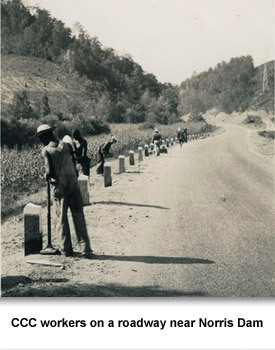
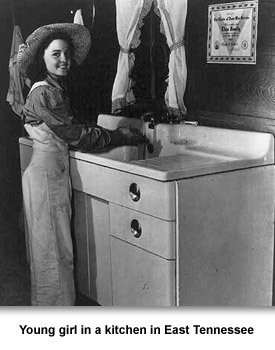
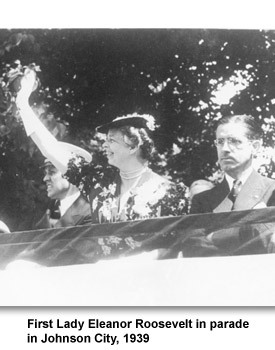
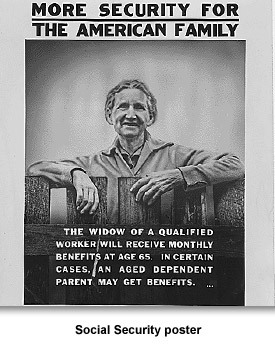
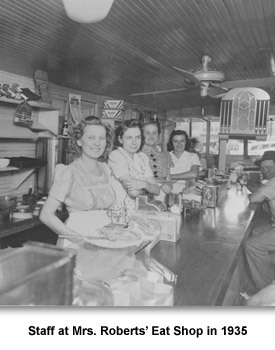
 Sponsored by: National Endowment for the Humanities
Sponsored by: National Endowment for the Humanities